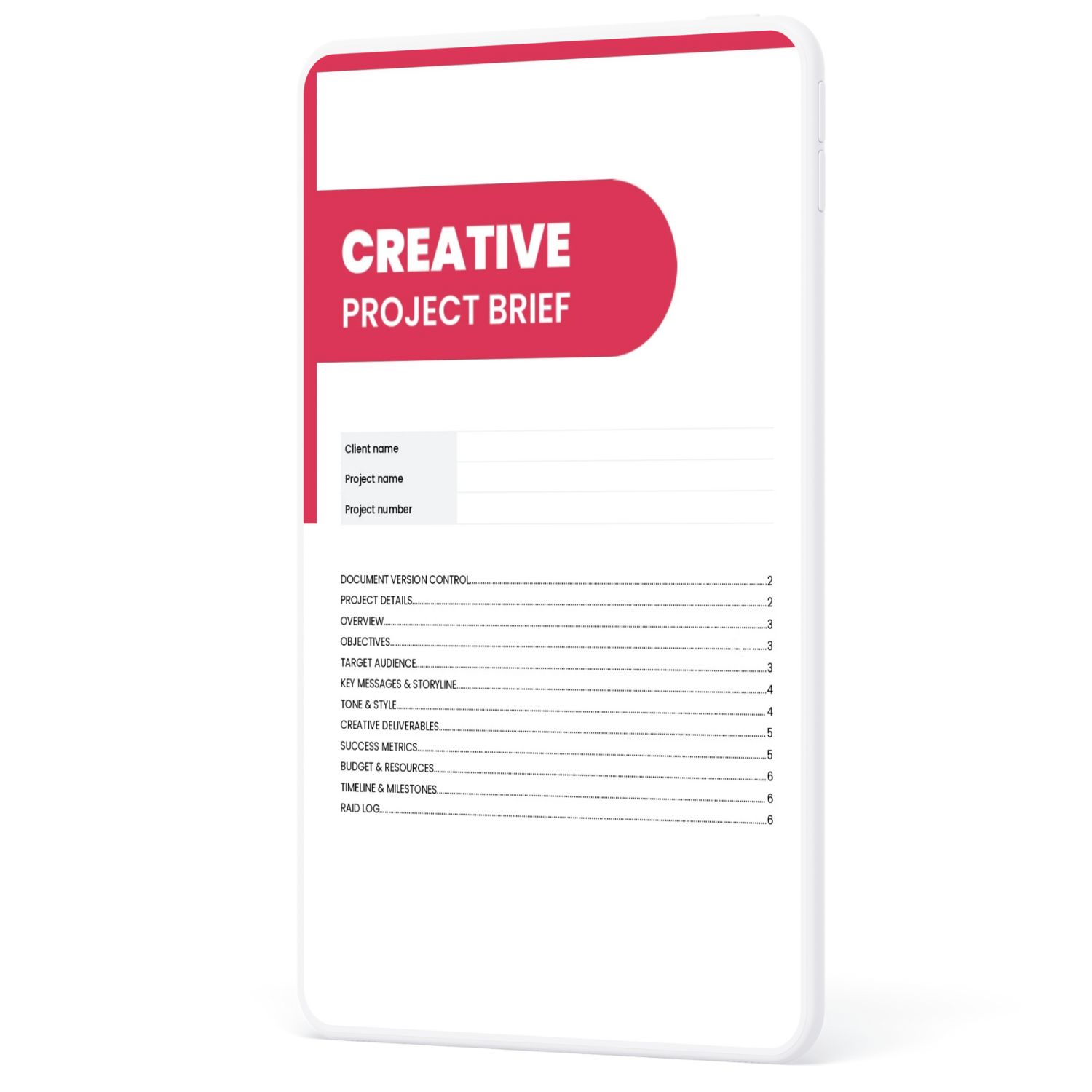In the world of marketing, design, and content creation, a creative brief is the unsung hero of project success, a powerful tool that aligns teams, sparks innovation, and ensures goals are met.
Yet, many grapple with the nuances of creating or interpreting one. Is it just a set of instructions? Or is it the roadmap to creativity?
Let’s break down what a creative brief is, why it matters, and how your team can create one that works.
What is a creative brief?
At its core, a creative brief is a concise document that outlines the key details of a creative project. It bridges the gap between the client or stakeholder’s vision and the creative team’s execution, ensuring all project members — designers, writers, strategists, or clients — are aligned on objectives and deliverables.
A strong creative brief answers fundamental questions such as:
- What is the project’s purpose or objective?
- Who is the target audience?
- What are the key messages to convey?
- What deliverables are required?
- What is the timeline and budget?
Why your team needs a creative brief
Skipping the creative brief often leads to chaos: misaligned expectations, wasted time, and disappointing results. Here’s why investing in a well-crafted brief is worth it:
- Clarity and focus: A creative brief distills complex ideas into clear, actionable steps. By defining the project’s scope and objectives, it eliminates ambiguity and keeps the team focused.
- Efficient use of resources: With a clear understanding of what’s needed, teams can avoid unnecessary revisions and stay on schedule, saving time and money.
- Inspires creativity: Far from being restrictive, a well-written brief fuels creativity by providing the necessary context and constraints for innovative thinking.
- Accountability: With everything documented, it’s easier to measure success and hold team members accountable for their contributions.
Key elements of a great creative brief
A creative brief is only as good as the information it provides. Include these essential elements for a document that delivers results:
- Background information: Provide a high-level summary of the project, briefly explaining the context. What problem are you solving? What’s the opportunity?
- Objectives: Define the specific goals and measurable outcomes the project should achieve. What do you want the audience to think, feel, or do after interacting?
- Target audience: Define who you are speaking to, including demographics, psychographics, and insights into your audience’s needs, behaviors, or pain points.
- Key messages and storyline: Outline the core message, theme, or narrative the creative work should communicate.
- Tone and style: Define the overall tone, mood, and visual style to ensure the creative work aligns with your brand and resonates with your target audience.
- Deliverables: Specify what creative assets you need, including details on formats, dimensions, and platforms you’ll be using to deliver your work.
- Success metrics: Define how the effectiveness of the creative work will be measured and evaluated.
- Budget and resources: Set a clear understanding of the available budget and resources to manage project scope.
- Timeline and milestones: Define the project timeline, including major milestones and key deadlines.
Tips for writing a strong creative brief
- Simplify: Be concise and clear in every section to avoid overwhelming your team with unnecessary details. Avoid jargon, and make objectives easy to understand.
- Prioritize: Focus on the most critical information first, ensuring key goals and deliverables are top priority.
- Visualise: Use visuals such as charts, mood boards, or reference images to complement the text and bring your vision to life.
- Collaborate: Involve team members or clients early in the drafting process to ensure buy-in and alignment.
- Revisit: Regularly update your brief as the project evolves to ensure it remains relevant and aligned with goals.

Ready to create better briefs, faster?
Our Creative Brief Template is made for small businesses, freelancers, and agencies – fully customizable to keep your projects clear, focused, and on budget. Use code WEB10 for 10% off!
A creative brief might seem like an extra step, but it’s a step that sets the foundation for success. It empowers your team to produce work that is not only creative but also strategic and impactful.
By investing time in crafting a thoughtful brief, you’re saving countless hours of confusion and revision later. So, before your next big project, pause and ask: “Does everyone know where we’re going?” If not, it’s time to write that brief.
This post was previously published on Medium.com.

